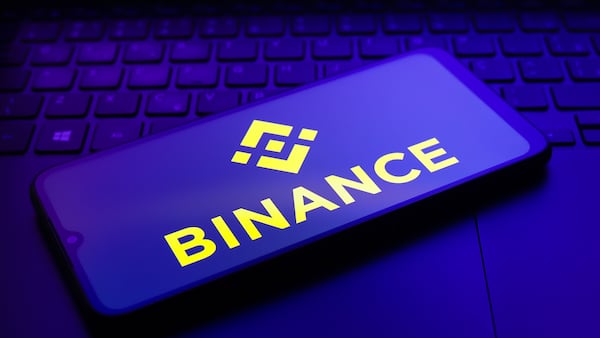- Binance Staked ETH is growing fast.
- The exchange's infrastructure has helped the liquid staking token grow.
- It's still behind Lido's stETH.
Binance Staked ETH, the top crypto exchange’s staked version of Ether, just hit a whopping 20% of the entire Ethereum liquid staking market, worth over $9 billion, following months of record growth.
Over the past 30 days, the liquid staking token, which trades under the ticker wBETH, increased its circulating supply by almost 18%, the biggest gain among the top liquid staking providers.
The outsized growth of the token, launched in 2023, is largely driven by Binance’s vast distribution network, Matthew Mena, crypto researcher at 21Shares, told DL News.
“As the largest centralised exchange in crypto by far for both spot and perpetual markets, Binance has an unparalleled ability to drive user adoption at scale,” Mena said.
A Binance spokesperson told DL News the firm attributes the growth of wBETH to its utility, ease of access, and the growing market confidence in Ether as an asset.
The token’s growth comes as institutions are increasingly investing in Ethereum. The cryptocurrency’s price is up almost 23% over the past week.
In early July, Wall Street strategist and longtime Bitcoin bull Tom Lee pivoted Bitcoin miner BitMine Immersion Technologies into an Ethereum treasury company. Entrepreneur and venture capitalist Peter Thiel holds a 9.1% stake in the firm.
Consensys CEO Joe Lubin is also gobbling up Ether through his own treasury company Sharplink Gaming, where he is chair.
Both companies said they plan to stake the Ether they hold as part of a strategy to increase their holdings.
“Staked Ether is hitting all-time highs and Binance staked ETH is capturing most of the fresh growth,” Abdul Rehman ,head of DeFi at Ethereum-compatible blockchain Monad, told DL News.
What is liquid staking?
Ethereum liquid staking allows users to stake Ether and receive receipt-like liquid staking tokens in return, which represent the underlying Ether.
They eliminate the complexities of users staking themselves, which requires a minimum of 32 Ether and can be technically challenging.
Liquid staking tokens can be used in DeFi protocols or traded while the original Ether remains staked and earns rewards.
Liquid staking is the second-largest DeFi sector on Ethereum behind lending, with over $45 billion worth of deposits, per DefiLlama data.
‘Full-stack ecosystem’
Binance making its staked Ether version easy to access has also contributed to its growth, Rehman said.
The Binance app offers a one-click solution for staking and redeeming Ethereum, compared to other liquid staking providers like Lido, which involve multiple steps and require going onchain with a self-custodial wallet.
“It’s embedded into a full-stack ecosystem where users can trade, borrow, lend, and deploy capital efficiently, all within a single platform,” Mena said. “For many users, especially those newer to DeFi or managing larger portfolios, that convenience and capital efficiency are hard to beat.”
There’s over $9.3 billion worth of Binance Staked ETH in circulation.
Ninety per cent of that is held by Binance on behalf of its user, Rehman said, which he attributes to more Binance users choosing to stake their Ether holdings.
And Binance’s success is an outlier. Similar staked Ether offerings from rival exchanges haven’t received nearly as much attention.
Coinbase’s Wrapped Staked ETH, for example, has just $459 million worth in circulation, down from an all-time high of $806 million in March last year.
Binance vs Lido
Binance Staked ETH is the fastest growing liquid staking token. But it’s still far behind Lido, the market leader.
Lido has dominated the liquid staking market since early 2021. While the growth of other liquid staking providers, including Binance, has chipped away at Lido’s dominance in recent years, it still accounts for 63% of the market.
Rehman said he doesn’t expect Binance to challenge Lido for the top spot anytime soon.
For one thing, they both target quite different sets of investors.
“wBETH’s DeFi integrations are a secondary distribution, while the primary distribution is on the Binance app itself,” Rehman said.
Lido, on the other hand, is still the liquid staking token of choice among DeFi users because it is better integrated with other DeFi protocols, he said.
And to be sure, the absolute amount of Ether staked through Lido isn’t falling. It’s just that recently more new Ether is being staked through Binance, increasing the market share of Binance Staked ETH.
“I expect Lido to continue its overall dominance,” Rehman said.
Tim Craig is DL News’ Edinburgh-based DeFi Correspondent. Reach out with tips at tim@dlnews.com.








